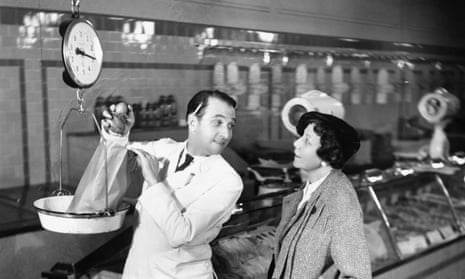Starting a fight between metric and imperial units of measurement seems, at first, like an odd choice for Boris Johnson. From a political perspective. The move is obviously pure piffle: a dumbshow designed to placate (or at least entertain) the conservative base while distracting and antagonising rivals. But knowingly or not, by reigniting what 19th-century observers once called the “Battle of the Standards”, Johnson has tapped in to a long and wild history of anti-metric feeling that encompasses xenophobia, pseudoscience and fears over lost political sovereignty.
My own introduction to the subject came a few years ago when researching the history of measurement. I’d travelled to Paris to see the original metre and kilogram standards, kept under lock and key in France’s national archives alongside the last letter of King Louis XVI and the original engraving of the declaration of the rights of man and of the citizen. There, I learned how the history of the metric system is entwined with the events captured in these documents: the end of the French monarchy and the beginning of French republicanism.
Prior to the introduction of metric units, France’s system of measurement was in disarray. The right to define units of length, capacity and weight was a privilege of the nobility, which led to a profusion of units, often traded under different values while retaining the same name. “[T]he infinite perplexity of measures exceeds all comprehension,” the English agriculturist Arthur Young commented when visiting the country in 1789. “They differ not only in every province, but in every district and almost in every town.” This metrological excess not only stymied economic growth, but enabled widespread cheating and exploitation of the peasantry.
As a result, reforming weights and measures was high on the revolutionary agenda, and seen as a way to restore power to the ordinary woman and man. The French intellectual elite, the savants, decided that instead of using units of length like the pied du Roi (which literally means “the foot of King” and is traced back to the rule of Charlemagne), France would have the metre; a unit derived from the latest scientific research and defined as one ten-millionth of the distance from the equator to the North Pole. Here, the political intent of the metric system becomes clear: instead of trusting to the disembodied authority of a long-dead king, the revolutionaries chose to embrace rational knowledge and the shared inheritance of the Earth.
Naturally, this was the cause of a great deal of suspicion in the UK. And in the following century, as metric units spread across Europe and the debate over their adoption gained momentum in the UK, anti-metric campaigners marshalled all manner of bombastic arguments. They decried the metric system as overly complex, unnatural; the product of atheist revolutionaries, and – worst of all – foreign.
After a vote for metric conversion nearly passed through the House of Commons in 1863, an editorial in The Times warned that adoption of the metre and kilogram would fill every household in the land with “perplexity, confusion, and shame”. “It is of no use to urge that other countries have undergone this revolution, and survive,” thundered the author. “What are France, the Zollverein, and Portugal to us? They are accustomed to revolutions, earthquakes, and wars.” Sadly, such exceptionalism and xenophobia hardly sound out of place today.
Other arguments arrayed against metrication ranged from the obscure to the practical. One popular theory was that the inch was a divine unit of measurement bestowed upon humanity by God; its value encoded into the dimensions of the Great Pyramid at Giza to last all time. Others noted the practical benefits of units that divide easily into halves, thirds, and quarters (an undeniable advantage at a time when many consumer goods were not pre-packaged). Ultimately, though, the real reason the UK retained the imperial system is captured in the name itself: it was the economic weight and geographic span of the British empire that ensured that the threat posed by foreign measures could be safely ignored.
There are obvious reasons to cherish and respect imperial units of measure. They have a rich history; their origins date back hundreds of years before the empire ever existed. And their cultural significance remains undimmed in many areas of life. Very few of us would countenance the removal of pints from pubs, for example. But touting the “return” of imperial units to shops is just disastrously retrograde. The logistical burden it would place on supermarkets could lead to increased prices at a time when many household budgets are already stretched thin, while polls show that younger generations are increasingly happy with metric measures. By kindling this debate, Johnson and the Conservative party have certainly keyed in to an emotive and overlooked aspect of our history. But the return of imperial measures is simply unfathomable.
James Vincent is a journalist and author. His first book, Beyond Measure: The Hidden History of Measurement will be published shortly
